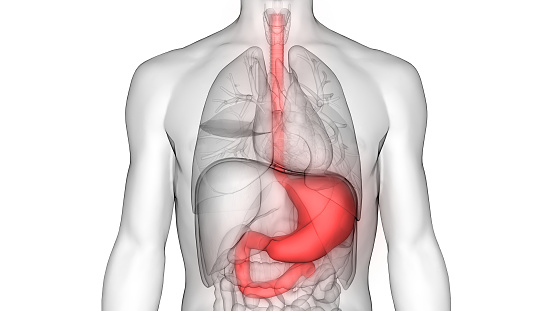
A new retrospective study, led by Drs. Jie Luo and Huang-Ying Tan and published in BMC Gastroenterology, sought to determine proper management protocols and prognosis of patients with type 1 gastric neuroendocrine tumors (NETs).
The researchers stated that physicians currently have a limited understanding of how to properly diagnose and treat type 1 gastric NETS.
Their study analyzed the data of 229 patients (59.4% female) with type 1 gastric NETs who received treatment at the China-Japan Friendship Hospital between 2011 and 2022.
A total of 72.5% of patients developed multiple tumors. Of these tumors, 66.4% measured less than 1 cm, 69.4% were NET G1, and 2.2% were stage III-IV. For treatment, 76.9% of patients underwent endoscopic management, 60.7% received traditional Chinese medicine, 10.5% received somatostatin analogues treatment, and 6.6% underwent surgical resection.
Anemia (39.7%), Hashimoto thyroiditis (29.3%), and other autoimmune diseases (6.4%) were the most reported comorbidities. Of the participating patients, 9% presented with other malignant tumors, including colorectal cancer, gastric cancer, lung cancer, duodenal NETs, and rectal NETs.
After a median follow-up of 31 months (range, 2-122 months), 70 patients (41.2%) experienced their first recurrence. The median recurrence-free time was 43 months, with 1-, 2-, and 3-year cumulative recurrence-free survival rates of 71.8%, 56.8%, and 50.3%, respectively.
After a median follow-up of 39 months (range, 2-132 months), researchers observed no cases of disease-related deaths, while 1 patient experienced bilateral pulmonary metastasis.
The researchers concluded that patients with type 1 gastric NETs have a high recurrence rate and a long disease course and recommended that physicians increase their focus on long-term and comprehensive management for patients.
“In clinical work, it is necessary not only to treat and perform follow-up of type 1 gastric NETs, but also to strengthen the attention of related complications and associated diseases to achieve the best quality of life and survival prognosis,” the researchers wrote.







 © 2025 Mashup Media, LLC, a Formedics Property. All Rights Reserved.
© 2025 Mashup Media, LLC, a Formedics Property. All Rights Reserved.